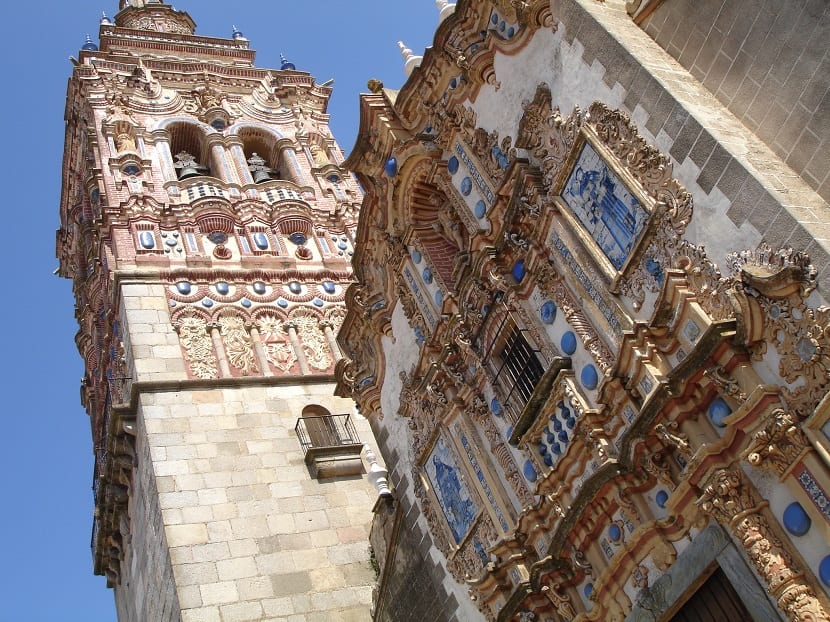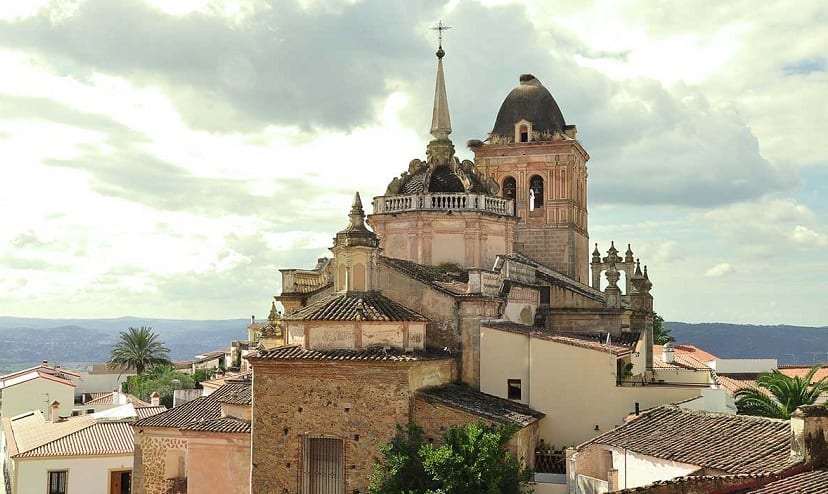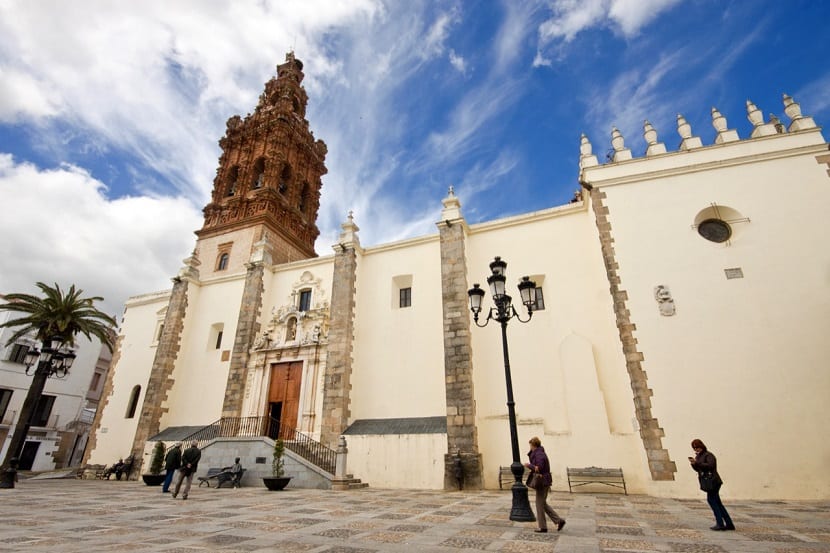
Image | Wikipedia
Jerez de los Caballeros is one of the last Spanish towns in the province of Badajoz before crossing the border into Portugal. This small town of about 10.000 inhabitants is full of history, monumental buildings and landscapes drawn by the beauty of the Extremadura pasture. It is not surprising that with so many attributes it was declared a Monumental Artistic Complex.
This Badajo town of steep streets, whitewashed buildings and a long history linked to the presence of the Templars and the Order of Santiago is a place that you cannot miss if you visit the province of Badajoz. But what to see in Jerez de los Caballeros?
Jerez de los Caballeros Castle

Image | Mapio.net
The Jerez de los Caballeros Castle stands on a hill that dominates the plain that forms the Ardilla River, nestled in the Sierra de Santa María.
The origin of Jerez de los Caballeros and its own castle has been the subject of debate. It is believed that it belongs to the XNUMXth century and it is deduced that it could have been an important square that was reconquered by Alfonso IX with the help of the Orders of the Temple and Santiago. In gratitude, Alfonso IX donated it to the Order of the Temple and they established themselves improving the old Muslim fortress to turn it into a Templar fortress that can be visited today.
The castle is retracted at one end of the walled enclosure, precisely in the area where it is most difficult to attack. In some of its corners it has defensive towers, among which the Torre del Homenaje stands out in the northeast.
For the construction of the castle, the material used was stone and despite the passage of time and the sieges it has suffered, it has remained in fairly good condition. However, the battlements were restored.
The visit to the Jerez de los Caballeros Castle is well worth the visit, not only for its long history but also for the beautiful views of the town from this fortress.

Image | Wikipedia
Church of St. Bartholomew
According to legend, its origin dates back to the time of the Reconquest, when the kings of León raided these lands to snatch them from the Moors. However, the exact date of its construction is unknown. The inscription that exists inside the temple is usually taken as a reference, where it is noted that one of the side chapels was finished in 1508. Therefore, it is thought that the church of San Bartolomé was built between the XNUMXth and XNUMXth centuries.
The side façade rises on a baroque platform as a tribune and the façade has Neoclassical forms. The current tower dates from 1759 as it had to be rebuilt since the previous one collapsed due to the Lisbon earthquake four years earlier. The style of the tower of the church of San Bartolomé is Baroque and is built of exposed brick with applications of fired clay and plaster covered with glazed ceramic.
Inside, the altarpiece of the main altar stands out, which is the work of José de la Barrera.
Saint Mary of the Incarnation

Image | Jerez de los Caballeros Town Hall
This temple is the oldest of those that exist in Jerez de los Caballeros as there is evidence that its origins date back to the times of the Visigoths. Inside there is an inverted column in which you can read an inscription that alludes to the year 556 of its foundation.
Santa María de la Encarnación has the most discreet tower in Jerez de los Caballeros but it is the most outstanding point from the Templar Castle and you can take some very interesting photographs when you are close to it.
The medieval walls

Image | Castles of Spain
The walls of Jerez de los Caballeros were built in the XNUMXth century at the time of the Knights Templar on the layout of the previous Muslim wall and taking advantage of the towers and original walls. From the top of the medieval walls you have magnificent views of the Badajoz town and you can see the towers of the city from a distance.
Next to the wall there are some constructions such as the Torreón de los Templarios, a defensive space in which it is said that some rebel Knights Templar were executed by order of the Pope in the middle of the XNUMXth century.
San Miguel Arcangel

Image | Extremadura Tourism
The church of San Miguel Arcángel stands in the center of the urban area. Its construction began at the end of the XNUMXth century and its style is baroque, although elements of different styles are mixed. A Gothic-style façade and the vaults of the two chapels located at the foot of the temple are preserved from the first period.
Covered by a dome, the Main Altar is formed by a baroque three-sided temple, rich in decoration with carvings of the evangelists.